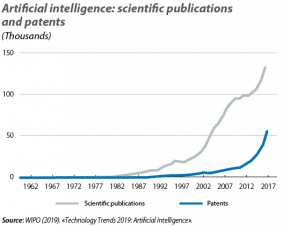The sharing economy: from emerging phenomenon to a key part of the digital revolution
What do terms such as the sharing economy», «on-demand economy» or «gig economy» suggest to you? Probably not that much. Even Americans, who live in the country where the phenomenon is the most developed, have little knowledge of it: when asked by the Pew Research Center in 2016, two-thirds of those surveyed had never heard of the sharing economy. Of the third that had, 40% emphasised an element of selfless collaboration between people, 25% stated that despite having heard the expression they did not know what it was, while 16% gave a much more accurate answer and said that it consisted of businesses or individuals sharing goods and services under short-lived arrangements.
Why do we say that this last group were closer to the mark? Well, when we review some of the hundreds of articles, case studies and policy proposals on the topic, we find that, besides the name, there are four elements that are repeated in most definitions. The first one is that the services of the sharing economy all tend to go through online platforms and, in most cases, these platforms are accessed via a mobile or tablet computer application. A second defining aspect is that the sharing economy involves peer-to-peer relations being established between either individuals or companies. A third characteristic element is that the relations that are established between the participants in the sharing economy are temporary in nature. Finally, the fourth ingredient of the definition is the exchange of assets, resources, time or skills, in a highly flexible and dynamic manner. Thus, if these four aspects are combined (since, individually, these elements can be found in other forms of doing business and are not specific to the sharing economy), it is likely that we are in the presence of a new phenomenon which hereinafter we will refer to as the sharing economy.
The fledgling nature of this phenomenon is denoted by how difficult it is to obtain reliable estimates about it using conventional statistics. For starters, a portion of the transactions of the sharing economy cannot be captured by the usual metrics, since they are non-pecuniary activities. However, in the case of transactions that involve monetary payments, it is possible to quantify them. In general, one of the two following approaches is used to do so: either monitoring the extent of the consumption or that of the supply.
In the first instance, and despite the evidence being limited, the main conclusion is that consumers’ use of the sharing economy is still in a minority. According to the most reliable reports, between 20% and 30% of consumers in developed countries have used the digital platforms that support these services or have shared some of the tangible or intangible assets that are exchanged on them. Another aspect which is sometimes analysed is whether households receive any income from the sharing economy. According to the Pew Research Center, in the US in 2016, approximately 25% of Americans had received income from the sharing economy, although if we exclude sales of second-hand goods, the figure is reduced by more than half.
Following the second approach, and according to what is perhaps the most frequently-referenced report on the matter,1 five major sectors are often identified as using sharing economy business models: accommodation between peers or users, transportation between users, on-demand household services, on-demand professional services and collaborative finance. According to this report, in Europe in 2015, transactions in these five sectors amounted to 28 billion euros, generating revenues for the related digital platforms to the tune of 4 billion euros. Although these figures by themselves do not seem excessive, the pace of growth over the last few years is rather remarkable, since the number of transactions tripled between 2013 and 2015, while revenues quadrupled.
In view of the pace of change we are witnessing, the immediate question to consider is what the future holds for the sharing economy. Addressing this question requires us to first reflect on what the key factors that explain the phenomenon’s growth are. In general, the emergence of the sharing economy and its future dissemination is the result of the confluence of changes in two different areas: those strictly in the technological sphere and changes in consumer expectations. With regards to the former, digitisation and platforms offer suppliers the opportunity to adapt what they offer to constantly-changing conditions with a high degree of flexibility. This flexibility comes from both the manner in which the service is offered (for example, with few timetable restrictions) and the possibility to exploit users’ information (most likely using big data technologies). The services provided are often offered at a much lower cost than usual, due to factors such as the elimination of conventional intermediaries and the exploitation of underutilised assets (obvious examples of assets that are often scarcely used include homes and vehicles, but this can also be the case for intangible assets, such as certain types of knowledge).
There have also been substantial changes in consumers’ expectations and demands. Generally speaking, the benefits that consumers obtain from the sharing economy are the result of a combination of traditional economic factors (lower prices, less time devoted to searching or better matching of supply and demand, to mention just the main ones) and other factors of a social or environmental nature. These latter factors can include the satisfaction that comes with following more sustainable and environmentally-friendly consumer practices, greater transparency in the transactions, purely altruistic reasons or a sense of co-creating or, at least, guiding the service in question (for example, by offering proposals and/or rating the experience).
If these are the factors underlying the expansion of the sharing economy, it is worth considering how they interact with different business models. As with other changes associated with innovation and technological shocks, it is generally possible to distinguish three possible situations. The first situation would involve business models which have been created from scratch, using digital platforms and the collaborative approach, and which have been able to meet consumers’ new demands. We will refer to these as «pure» business models. Chronologically, these «pure» business models were the first to materialise and are more clearly associated with the phenomenon of the sharing economy. A second group is what we will refer to as «revolutionised» business models, referring to those whose traditional way of competing is being substantially altered by the emergence of the sharing economy. These business models will probably have to create hybrid business models in the future, incorporating elements of digital collaboration into other aspects of their traditional core business. Finally, there will also be companies whose business model will not be affected by the sharing economy, or only marginally so, which we will label «traditional» business models.
The forward-looking exercises available mostly focus on identifying «pure» sectors, activities and business models (in which the factors that drive the sharing economy are being exploited extensively) and projecting their future trends. This is the case, for example, of the aforementioned study, which forecasts the platforms’ revenues, as shown in the accompanying chart. This chart predicts that the platforms’ level of income will increase more than 20-fold between 2015 and 2025 in the five sectors mentioned above (accommodation between peers or users, transportation between users, on-demand household services, on-demand professional services and collaborative finance).
We know less about what could prove to be the sharing economy’s main area of expansion, namely its extension to other business models that already exist. For example, can we think of any sectors in which there are underutilised assets, increasing sensitivity regarding environmental sustainability or pressure to engage in the process of creating the experience? If the answer is yes, the sector could be susceptible to being revolutionised by digital platforms. Once way to realise the potential of the process is to determine which sectors, as conventionally defined, are being affected by the «pure» business models and to see how important they are in the economy. According to Credit Suisse, in advanced countries, the «pure» activities of the sharing economy are interacting with sectors which represent somewhere in the order of 50% of the economy. While the sharing economy is unlikely to ever reach such a high level of penetration, this figure nevertheless serves as a reminder that few sectors can be considered immune to its disruptive effects. As such, companies should devise changes in their business models to convert competitive relationships with the sharing economy into relationships of cooperation.
In conclusion, the sharing economy is a new phenomenon, as its still-blurry definition denotes, but beyond the name, what seems to be emerging is a new way of doing business. If a new Adam Smith today were to undertake the ambitious intellectual exercise of conceptualising what we have come to call the «digital economy», he would probably no longer use his famous example of the pin factory to highlight key aspects. Rather, we suspect he would find it more enlightening to explore some digital platforms, through which, by the way, he could sell his new book (sorry, ebook) to his peers, directly, which we venture might be called something like «The (digital) wealth of individuals».
Àlex Ruiz
CaixaBank Research
1. See Vaughan, R. and Daverio, R. (2016), «Assessing the size and presence of the collaborative economy in Europe», PwC. Study commissioned by the European Commission to monitor the phenomenon of the sharing economy.




